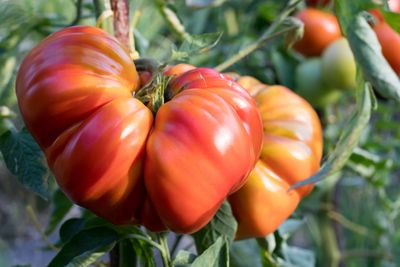What is a Pink Zapotec Tomato?
Pleats, ruffles, and fluting all describe the fruit of Zapotec pink pleated tomatoes. What is a pink Zapotec tomato? This tomato variety is also known as Oaxacan Ribbed, a nod to the region and appearance of the fruits. These heirloom tomatoes are late season, so you have to wait until late summer before you can enjoy their sweet-tangy flavor. Gardeners growing Zapotec tomatoes can expect indeterminate type plants which will vine and sprawl, requiring space and support. The fruits are a medium sized handful and have a nice balance of acid and sweet. Since they have scalloped bodies, they make a nice ruffled slice, very decorative when served with a bit of olive oil and basil. The larger fruits develop cavities inside which provides a convenient space for stuffing. This is a heavy producer in high heat locations. Seeds are not widely available, but this is one tomato plant that is worth sourcing.
Growing Zapotec Tomatoes
Harden off seedlings prior to situating them in the prepared beds. Set them outside in a sunny but protected location for 1 to 2 weeks before disturbing their roots. Gently unfurl roots in the planting hole and press soil around them, watering in well. Provide stakes or a tomato cage for support as the plant grows. Prepare a garden bed by tilling deeply and incorporating plenty of organic material. Start seeds indoors in most locations, eight weeks prior to planting outside. Expect sprouts in sox to ten days. Wait until all danger of frost has passed and plants have at least two sets of true leaves before transplanting outdoors.
Pink Pleated Zapotec Care
You will need to manage the stems as the plant grows by training them to the support structure. Plants can grow up to 6 feet (2 m.) tall and will need a very sturdy structure to withstand the girth of the plant and the heavy fruits. These are fairly drought tolerant plants but will fruit best with consistent moisture. Provide water under the leaves, at the root zone to avoid fungal issues. Several pests are common to tomatoes. Watch for insects and combat accordingly. Side dress plants with compost or well-rotted manure. Harvest in about 80 days. Use fruit in salsas, sauces, fresh, and even roasted.
